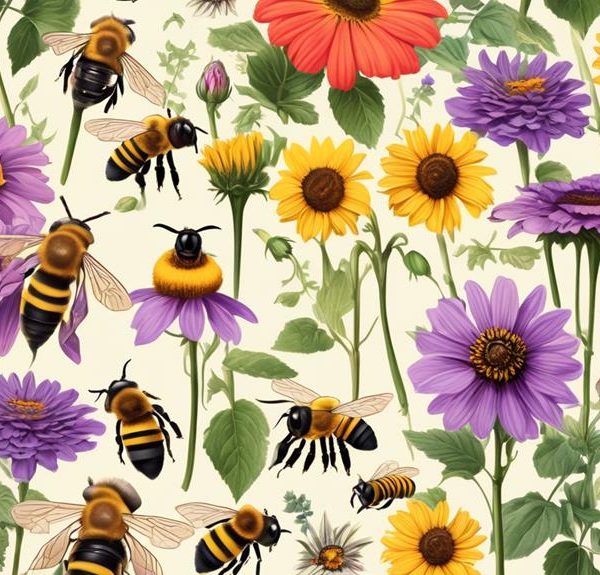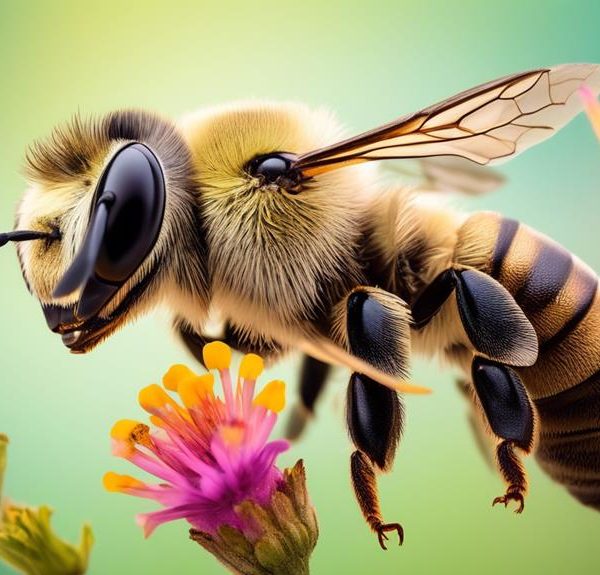Observe the intriguing world of leaf cutter bees and uncover the mystery of their surprising living conditions in this captivating exploration.
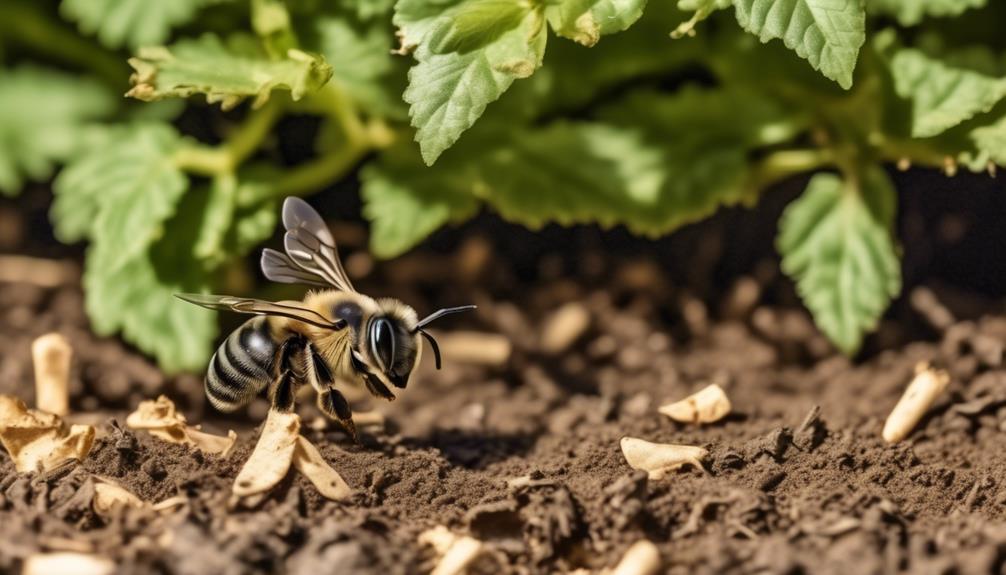
Do Leaf Cutter Bees Live in the Ground
You may believe that the Grand Canyon is an impressive excavation, but you've not considered the astonishing world of leaf cutter bees. As an expert in the field, I can tell you they are one of nature's most fascinating architects.
However, there's ongoing debate about their residence – do they live in the ground or not? You'd be surprised to discover the answer, and it might just change your perception about these industrious insects.
Are you intrigued enough to explore further?
Key Takeaways
- Leaf cutter bees make their homes in the ground, burrowing into soft soil or sand.
- They construct a complex network of soil tunnels leading to a series of brood cells.
- Leaf cutter bees prefer well-drained, sandy or loamy soils for nesting and avoid clay or waterlogged soils.
- They favor sunny, open areas that warm the soil and stimulate brood development.
Understanding Leaf Cutter Bees
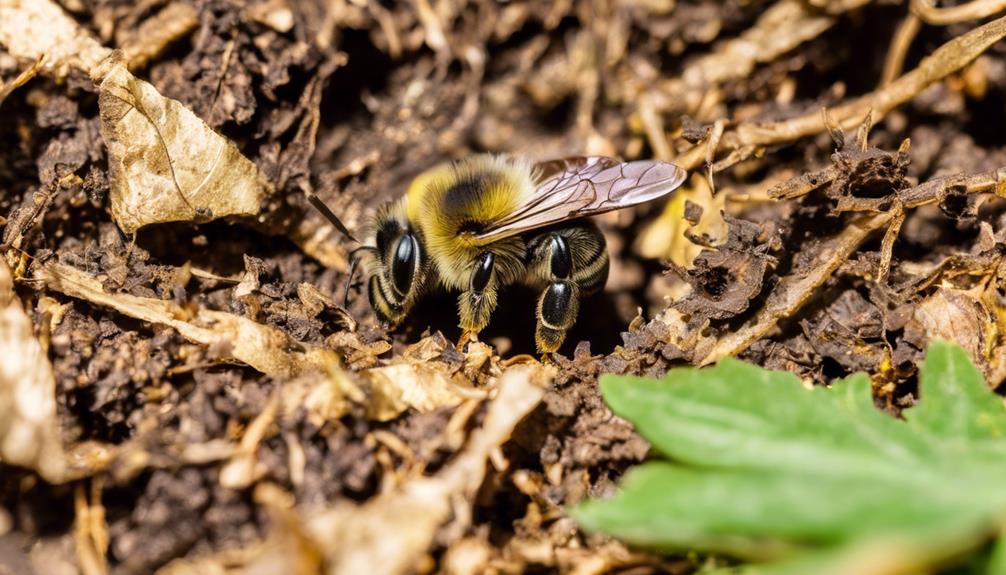
To truly grasp the intricate lives of leaf cutter bees, you'll need to delve into their unique habits, including their ground-dwelling tendencies and their meticulous leaf-cutting behavior.
Unlike many other bee species who build hives in trees or man-made structures, leaf cutter bees make their homes in the ground, burrowing into soft soil or sand. This provides them with an inconspicuous, predator-protected environment to lay eggs and raise larvae.
Now, let's examine their leaf-cutting behavior. You've probably seen the perfect circular or oval cuts in leaves around your yard. That's the leaf cutter bees' craftsmanship. They use their sharp, scissor-like mandibles to cut pieces of leaves or petals, which they transport back to their nests. These leaf fragments serve a crucial purpose: lining the brood cells for their offspring.
What's fascinating is the precise nature of their leaf-cutting. The cuts they make are precise and efficient, enabling them to carry the leaf pieces easily. Their behavior, while destructive to plants, is a testament to the bees' instinctual drive for survival and propagation.
Leaf Cutter Bees: Ground Dwellers?
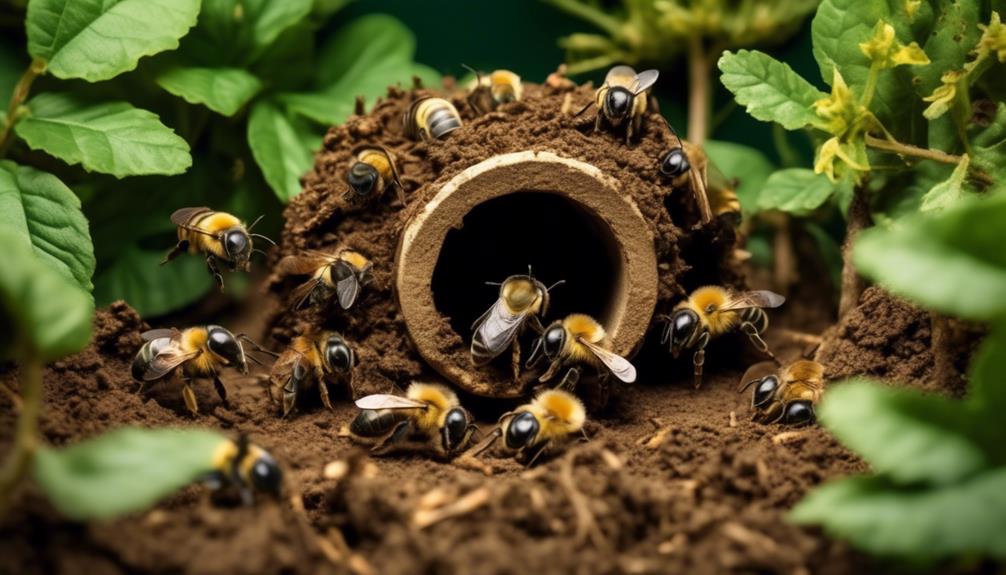
While you mightn't typically associate bees with ground-dwelling habitats, leaf cutter bees are indeed an exception, choosing to burrow into soft soil and sand to create secure nests for their offspring.
Unlike their honeybee counterparts that live in large colonies, these solitary bees demonstrate a unique nesting behavior. They don't just carve out a simple hole in the ground. Instead, they meticulously construct a complex network of soil tunnels, each leading to a series of brood cells. Here, the female leaf cutter bee lays her eggs, each in a separate cell provisioned with a mixture of pollen and nectar for the larvae to feed on.
This ground-dwelling nature also means they're more susceptible to threats that other bees mightn't face, such as flooding or predation from ground-dwelling organisms. Yet, their adaptability is seen in the fact that they can inhabit a variety of soils, ranging from sandy to loam.
Habitat Preferences of Leaf Cutter Bees
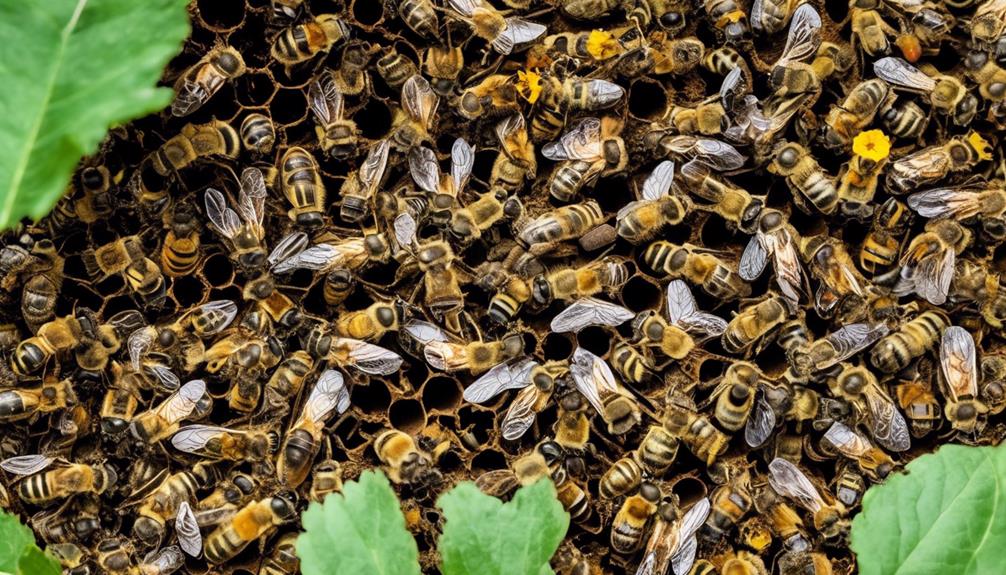
In choosing their nesting grounds, leaf cutter bees exhibit a remarkable preference for particular types of soil and environmental conditions. They aren't just haphazard in their selection; instead, they're quite discerning, picking spots that best cater to their needs and lifestyle.
Primarily, they're attracted to well-drained, sandy or loamy soils. These soils provide the right balance of moisture and stability, essential for the construction of their intricate underground nests. They aren't much for clay or waterlogged soils, as these can lead to nest collapse or risk of flooding.
When it comes to location, they favour sunny, open areas. They're less likely to colonize shadowy, cool spots. Sunlight warms the soil, stimulating the development of their brood. They're also more likely to nest in flat or gently sloping landscapes, as opposed to steep areas, which can pose construction challenges.
In terms of vegetation, leaf cutter bees appreciate a diversity of flowering plants. These provide the much-needed nectar and leaf matter for their survival and reproduction.
Understanding these preferences can guide your efforts if you're looking to encourage a population of these beneficial pollinators in your garden or farm.
The Significance of Leaf Cutter Bees
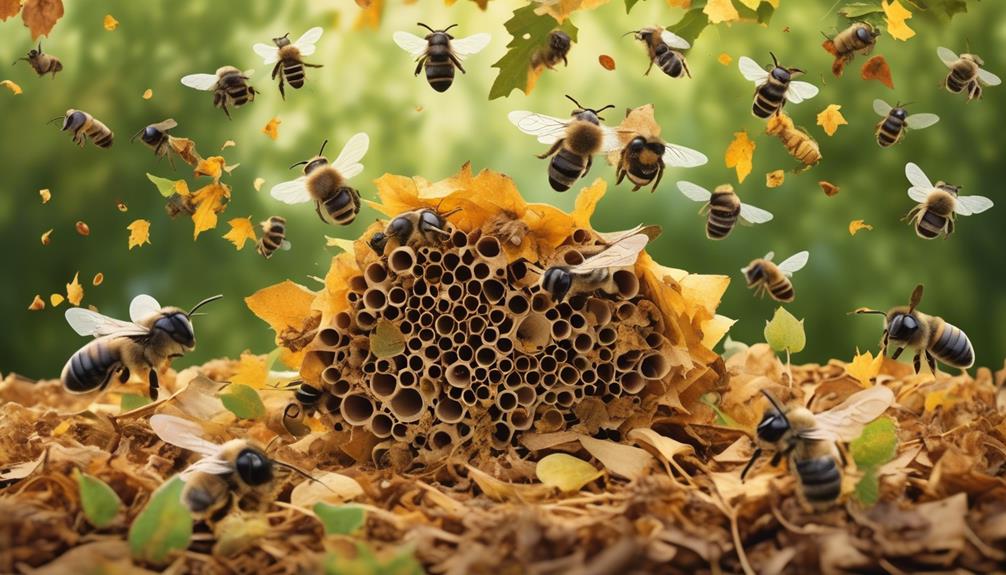
Given how they meticulously select their nesting grounds and their proclivity for a diverse range of flowering plants, you might already suspect that leaf cutter bees play a pivotal role in the ecosystem. Indeed, they're critical for plant pollination. Unlike honey bees that carry pollen on their hind legs, leaf cutters carry it on their abdomen, efficiently transferring it from flower to flower.
This species' unique method of leaf cutting also contributes to decomposition and nutrient cycling. When they cut leaves to line their nests, leaf cutter bees facilitate the breakdown of plant material, returning nutrients back into the soil. They're also an essential part of the food chain, serving as prey for various insects and birds.
These bees, however, are solitary and don't live in large colonies like honey bees. This behavior significantly reduces their vulnerability to diseases and pests, ensuring their survival, which in turn, guarantees the continuity of their ecological roles.
In light of climate change and the decline of pollinator populations, understanding and preserving leaf cutter bees has become more critical than ever. You, too, can play a part in this by cultivating a bee-friendly garden, promoting their proliferation and the health of our ecosystems.
Managing Leaf Cutter Bees in Your Garden
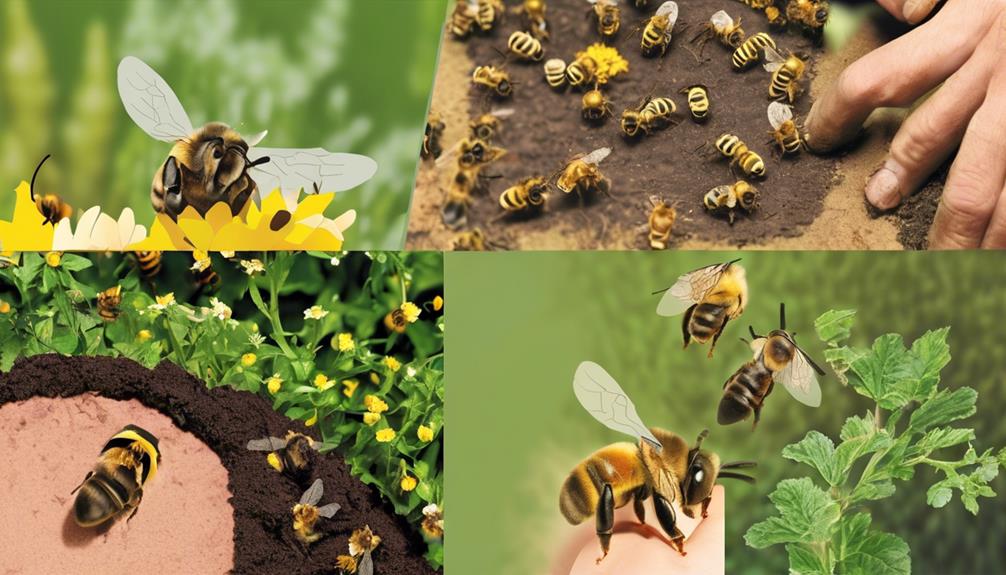
Having learned about the ecological importance of leaf cutter bees, you might be wondering how to attract and sustain these industrious insects in your own garden. The key is to create a conducive environment.
Leaf cutter bees prefer native plants, so integrate them into your landscape. These bees are also attracted to a diverse array of flowering plants, particularly those that bloom from early summer to late fall, ensuring a steady food supply.
You'll also need to provide nesting sites. Since leaf cutter bees are solitary and ground-dwelling, consider leaving a small patch of your garden undisturbed and free of mulch. This gives them a place to dig their nests. Alternatively, you can create a bee house using bundles of hollow stems or holes drilled into untreated wood.
Conclusion
In conclusion, you've discovered leaf cutter bees are indeed ground dwellers, preferring habitats rich in foliage. These bees play a crucial role in your garden's ecosystem, aiding in pollination.
However, their leaf-cutting can be a nuisance. It's important to find a balance, creating a healthy environment for these bees while also protecting your plants.
Remember, understanding and managing these industrious insects can lead to a harmonious co-existence in your garden.

